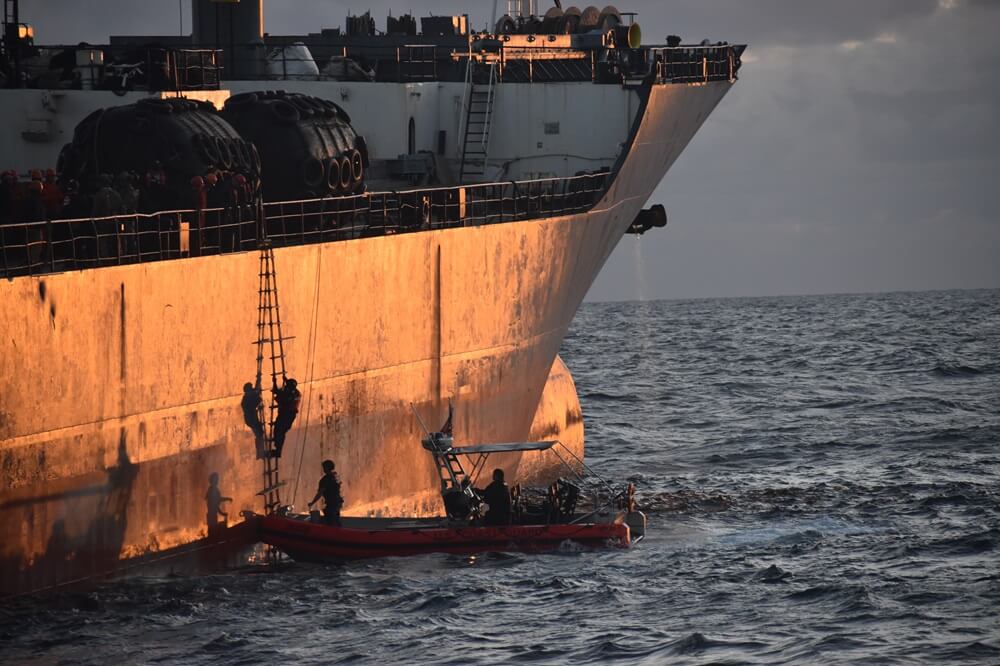U.S. Carries Out High Seas Fishery Enforcement off Peru
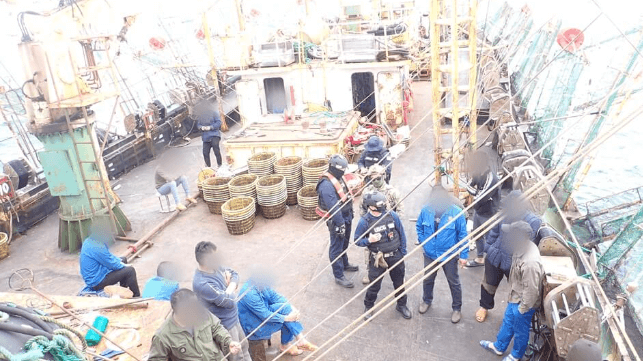
This month, the U.S. Coast Guard conducted its first high-seas boardings in the Eastern Pacific under the new inspection rules of the South Pacific Regional Fisheries Management Organization. As a member, the U.S. can board and inspect other signatories' fishing vessels in the SPRFMO's coverage area, which spans a vast swath of ocean from Australia to Chile. The area represents a quarter of the world's high seas, and one of its biggest regulated fisheries is squid - the primary target of China's distant-water fishing fleet.
The U.S. Coast Guard considers illegal fishing to be the world's top maritime security threat, now that regional piracy concerns have abated. IUU fishing is harder to target, as it can occur almost anywhere - including areas beyond national jurisdiction, where enforcement is challenging.
The Coast Guard has conducted fisheries enforcement boardings in waters around the world for decades, but this is the first time it is leveraging the new inspection rules of the SPRFMO on the high seas.
The agency is particularly interested in the distant-water fishing fleet, which is dominated by Chinese interests. A large share of the fishing pressure in the Eastern Pacific comes from these vessels, which can remain at sea for years at a time, replenishing stores and offloading catch via transshipment vessels without ever making a local port call.
This is especially common off Peru, which has banned port access to foreign fishing vessels unless they install special electronic monitoring systems. Hundreds of the Chinese distant-water vessels that operate off Peru have not complied, and have largely ceased calling at Peruvian seaports as a result, denying Peru's authorities the opportunity to board and inspect. Only five vessels have installed the system, according to the South Pacific Giant Squid Committee (CALAMASUR).
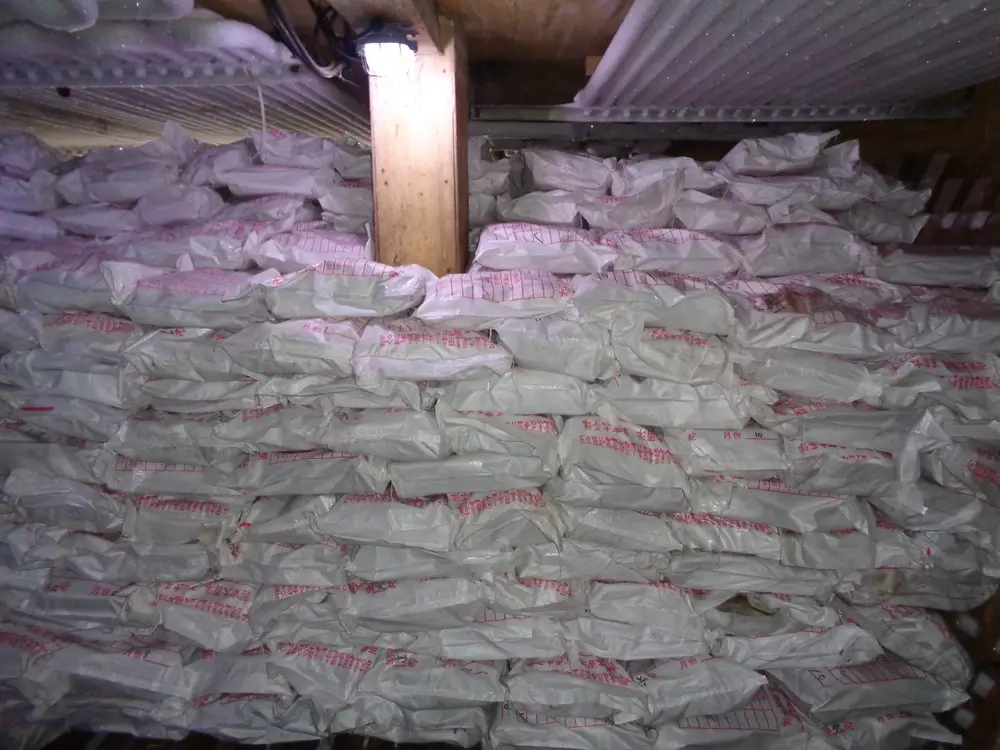
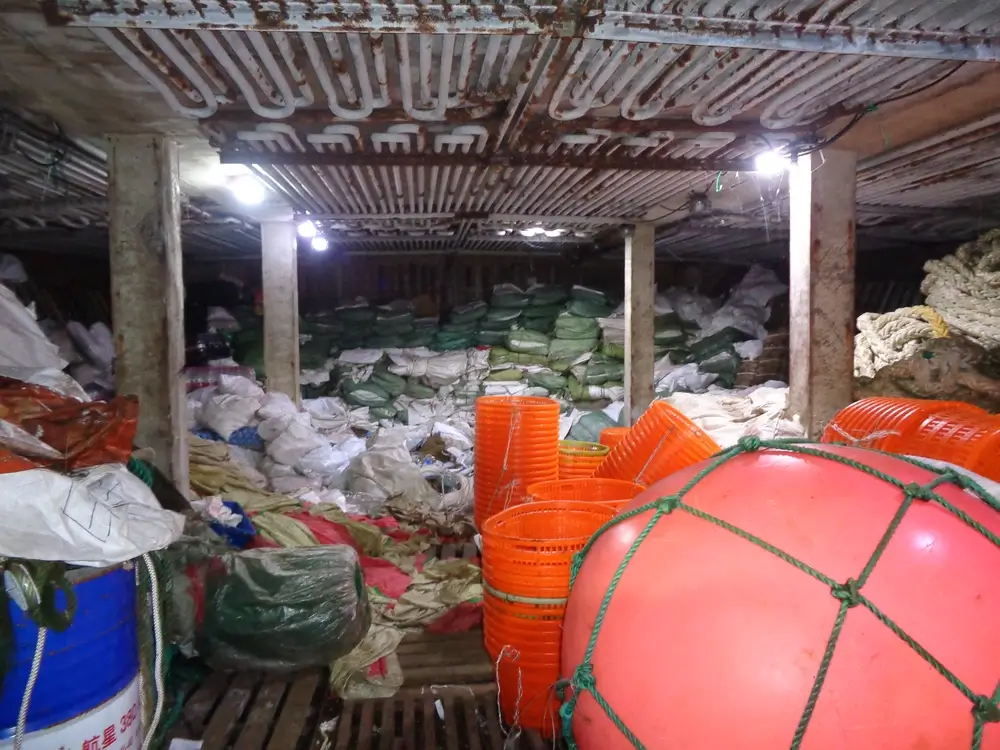
Boarding a foreign-flag transshipment vessel, above: bagged catch and spare fishing gear (USCG)
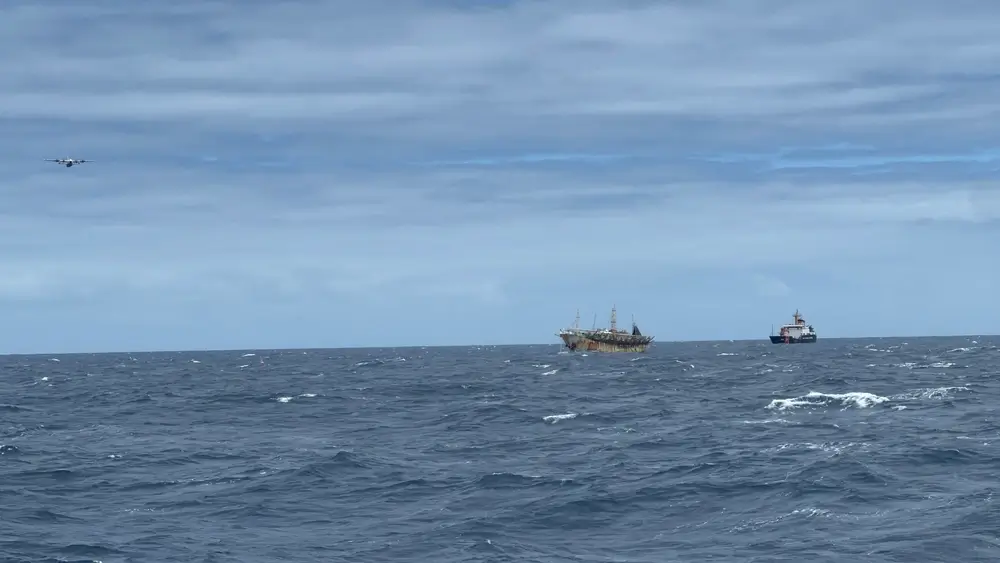

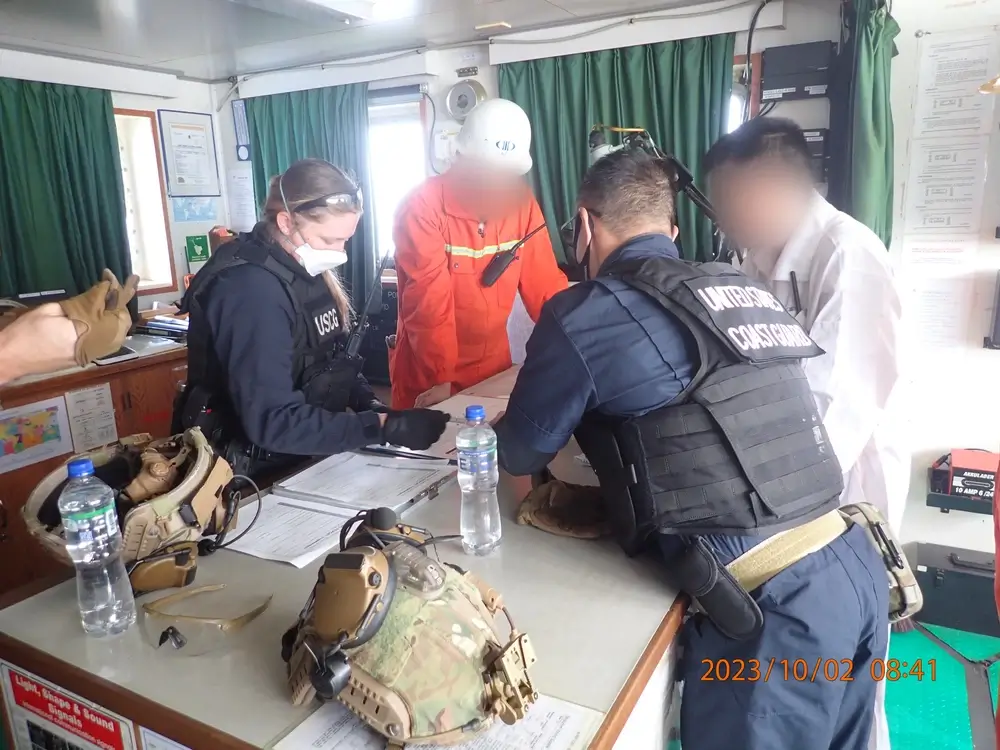
Boarding a foreign-flag squid jigger, above (USCG)
During the operation off Peru this month, a Coast Guard C-130 search plane flew over the high seas fishing fleet off the coast, carrying Peruvian officials to observe. A night overflight revealed the vast scale of the distant-water fleet, with each vessel's deck lit brightly in order to draw squid up from the depths.

that matters most
Get the latest maritime news delivered to your inbox daily.
On the surface, the crews of the buoy tender Alder and the fast response cutter Terrell Horne helped conduct boardings and inspections. Terrell Horne also carried out a search and medevac mission in order to find a fishing vessel and bring an injured fisherman back to shore for medical care.
"Last year we operated off the Galapagos, this year off the coast of Peru, and we will continue to deploy aircraft, cutters, and personnel to support our partners and monitor these distant water fleets wherever they roam," said Rear Admiral Andrew Sugimoto, commander of Coast Guard 11th District in a statement. "These operations help bring like-minded countries closer together to protect vulnerable fish stocks [and] support the economic stability of coastal nations."

